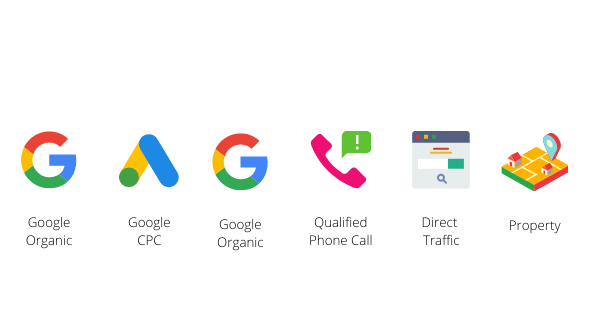
CDP: The Special Ops of MarTech
We can probably agree that collecting data that sits in the cloud, and is never used in a meaningful way, isn’t valuable to your marketing insights. It’s perhaps verging on a digital Beanie Baby collection. We can also probably agree that the amount of data we all have access to is vast, and if we’re honest with ourselves, it’s a little (ok, often very) overwhelming.
This is an understatement, but we’ll say it, data and data science are extremely impactful on businesses. But, we need to remember that data scientists are humans too, just like marketers, or really any human, and they can’t be-all and do-all.
With the ever-growing quantity of data we have access to, particularly now with so many activities funneled online, data scientists need help from advanced machine learning to connect disparate actions taken by a user on your property’s or community’s website into a buyer’s journey.
If you’re over the overwhelm, this is where a Customer Data Platform (CDP) comes in. The marketing + data dream-team you’ve maybe never heard of, but absolutely need.
What is a CDP?
Glad you asked. A CDP is best used to unify and organize data collected from multiple sources as prospects interact on your website or with your business online. Once the data is stitched together, a CDP can clean up the data by de-duplicating information and connecting customer profiles or journeys.
For example, let’s imagine a researching renter or senior first turns to online search and Googles something like “apartments, storage units, or senior living in Portland, Oregon.” Then, they click on a search ad, and browse the property or community’s website. Two days later they make a phone call from the property or community’s Google My Business listing. In a CDP the customer journey could look something like the image below.

All of this first-party data would be stored in the CDP, not necessarily with that person’s name, but as a path of research and steps that led them to convert. And now, this is where the data turns from one person’s journey to a data deluge. So if your CDP was gif-worthy, its reaction might look like this…
One individual’s journey or your own anecdotal evidence, while interesting, isn’t powerful enough to inform your daily digital marketing spend. The power of this data is the collective, when we can see patterns in groups of researching customers. Then, with the help of data science and machine learning, marketers (like you) can understand which marketing channels are effective in connecting with researching renters and residents.
(P.S. With the recent data privacy changes, choosing a MarTech partner whose first-party data is backed by a CDP is vital.)
A CDP Empowers Your Marketing to Navigate Change
You know that modern customer journeys are complex, crossing many channels, touchpoints, and devices; creating thousands of data points. To make sense of this vast amount of data, marketing teams need a helping hand. Without a CDP to connect prospects’ online journey fragments into full user journeys, multi-touch attribution would be impossible. We would never know which web sessions were followed by a phone call, form fill, or other high-intent interaction.
Connecting similar customer journeys paints a richer picture and allows patterns to emerge about groups of individuals, which marketers can then act on. To be blunt, without a CDP to organize first-party data, we couldn’t apply predictive modeling or optimize digital advertising budgets or allocate spend to high-conversion touchpoints. (P.S. Want to learn more about marketing optimization? Watch our webinar.)
In essence, a CDP along with advanced machine learning, allows marketers to connect with prospects at the right time, in the right channel, with the right message. Consider this: 93% of marketing executives in Forbes Insights/Treasure Data survey anticipate that employment and analysis of customer data in decisions and campaigns will create a noticeable shift in their ability to meet disruptive and competitive challenges.
It seems like an understatement, but we are (hopefully) nearing the tail-end of some of the biggest market disruptors many businesses have encountered. Leveraging advanced data science backed by a CDP allows businesses to make up-to-date decisions. Instead of looking at historical trends or other lagging metrics, you’re pulling from a deep well of up-to-date data to surface present-day trends and drive marketing decisions.
MarTech Special Ops
Marketing’s best kept secret doesn’t need to be a secret. If you’re over the data overwhelm, work with a best-in-class MarTech provider whose first-party data is backed by a CDP. They’re the marketing dream team, who can unlock insights and help you navigate past problems before they arise.
Learn more about the G5 approach to data-driven marketing, by downloading Part 4 of the G5 MarTech Series.
Get News, Articles & Updates in Your Inbox
Thank You for Your Interest
We will be in contact soon and look forward to learning more about you and your company. Based on your marketing challenges, we’ll discuss increasing visibility into your analytics and how to generate more and better leads so you can achieve your marketing goals.
In the meantime, we invite you to check out our checklist on website accessibility. Use this checklist to start assessing the baseline accessibility of your website.
Enjoy! We’ll be in touch very soon.
